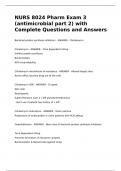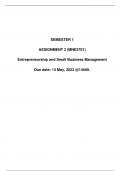Lecture notes
Slides samenvatting MTO-E (424012-B-6) Qualitative Research Practice
- Module
- Institution
- Book
Deze samenvatting bevat alle besproken onderwerpen die tijdens de hoorcolleges zijn benoemd. De onderwerpen beschreven in deze samenvatting, die tijdens de hoorcolleges niet of mager uitgelegd werden, zijn aangevuld met informatie beschikbaar uit het cursusmateriaal.
[Show more]













